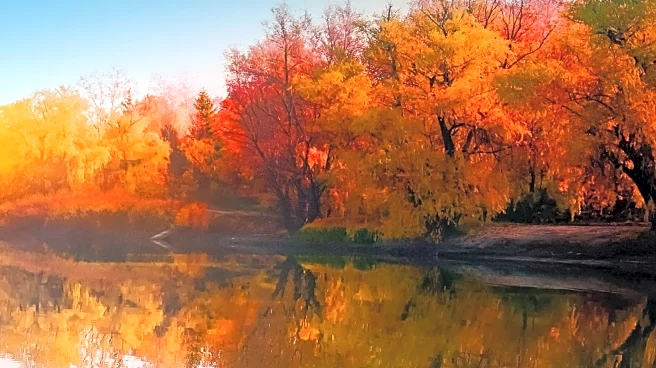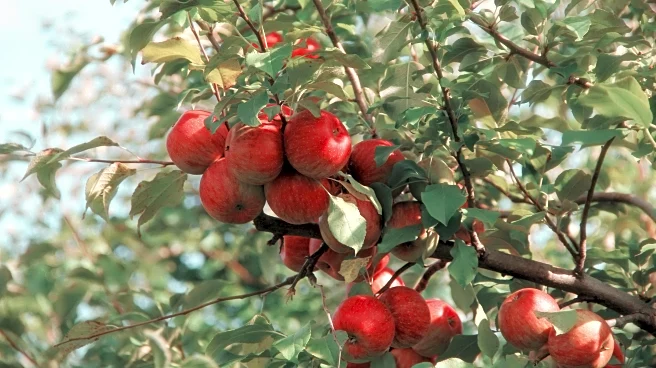What's Happening?
As autumn approaches, the U.S. is gearing up for the annual display of fall foliage, with leaves transitioning from green to vibrant hues of yellow, orange, and red. According to Brandon Fuller, a doctoral candidate at the University of North Carolina at Chapel Hill, this change occurs as trees store chlorophyll, the chemical responsible for green coloring, in preparation for winter dormancy. The absence of chlorophyll reveals other pigments like carotenoids and anthocyanins, which provide the characteristic fall colors. While some areas in the northeastern U.S. may begin to see these changes earlier, peak foliage is expected in October. Popular activities during this season include scenic train rides, photography, and leaf-peeping, with regions like Vermont and the Appalachians offering prime viewing spots.
Why It's Important?
The annual fall foliage season is significant for both ecological and economic reasons. Ecologically, the process of leaves changing color and falling contributes to nutrient recycling, enriching the soil and supporting various organisms. Economically, the vibrant display attracts tourists, boosting local economies through increased spending on travel, accommodations, and related activities. Areas known for their fall colors, such as the Great Smoky Mountains and Adirondack Mountain region, benefit from heightened visitor interest. Additionally, the cultural practice of using fall foliage for natural dyes, though less common, highlights the diverse ways in which communities engage with the season.
What's Next?
As the season progresses, regions across the U.S. will continue to experience the unfolding of fall colors, with peak foliage expected in October. Communities and businesses in areas known for their fall displays are likely to prepare for increased tourist activity, offering various events and experiences to capitalize on the season. Environmental experts may also continue to educate the public on the benefits of leaving fallen leaves in place to support local ecosystems. Additionally, interactive tools like fall foliage maps will help enthusiasts plan their visits to witness the seasonal spectacle.
Beyond the Headlines
The phenomenon of fall foliage also raises questions about the impact of climate change on seasonal patterns. However, experts like John Seiler from Virginia Tech suggest that the timing of leaf color changes is primarily influenced by day length rather than climate variations, indicating that traditional fall foliage patterns may persist despite changing weather conditions. This underscores the resilience of natural cycles and the importance of understanding ecological processes.













